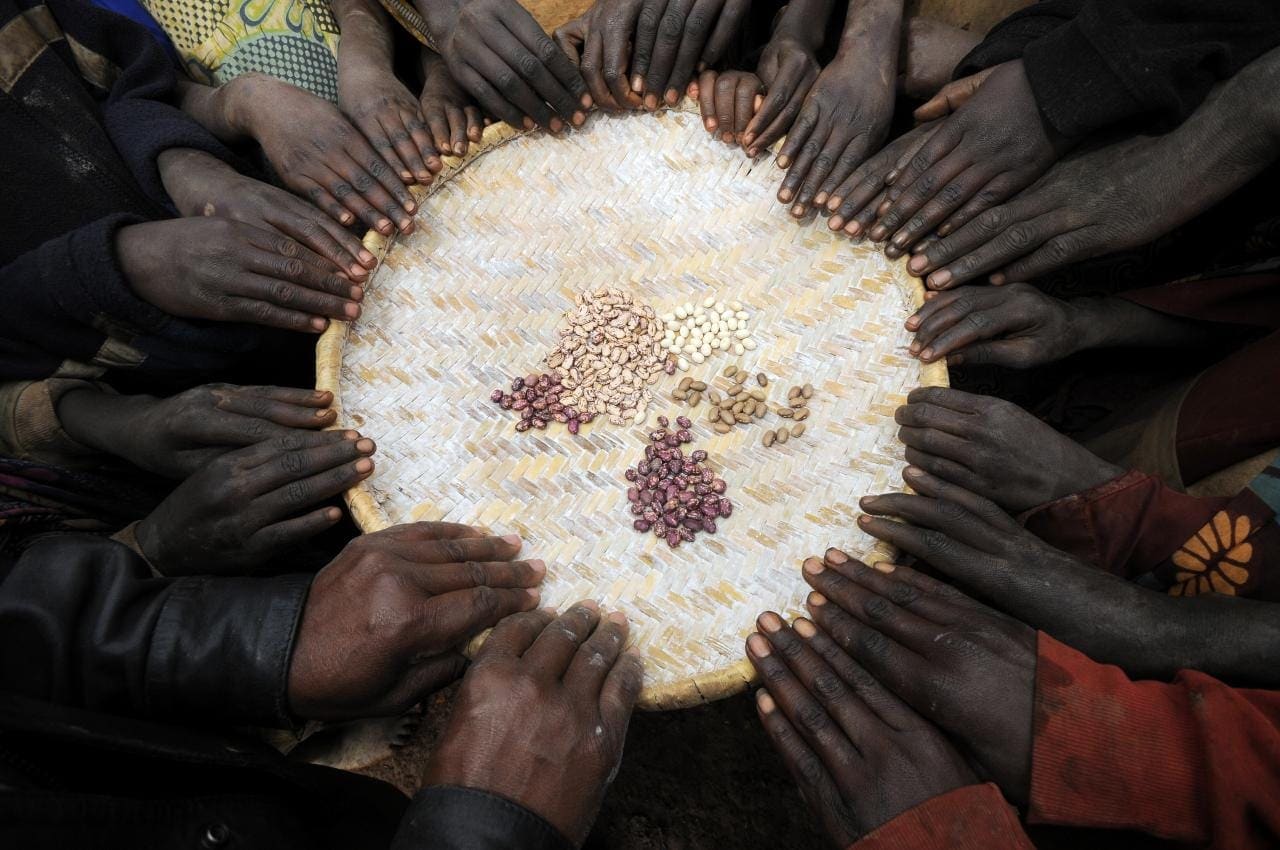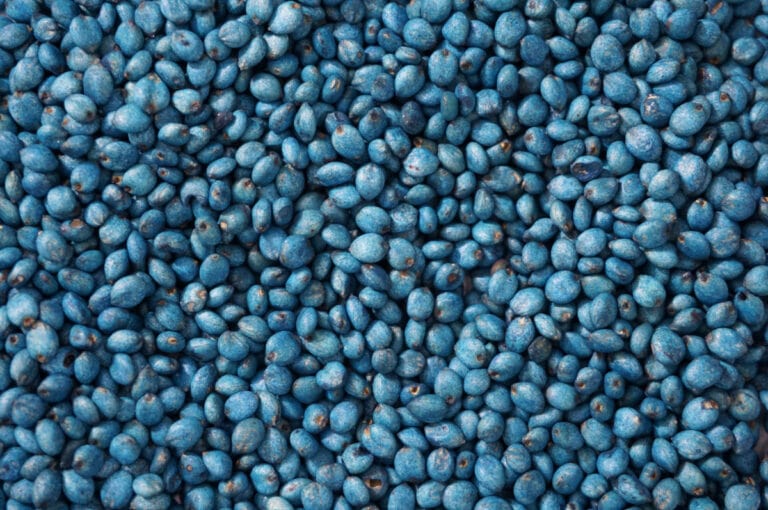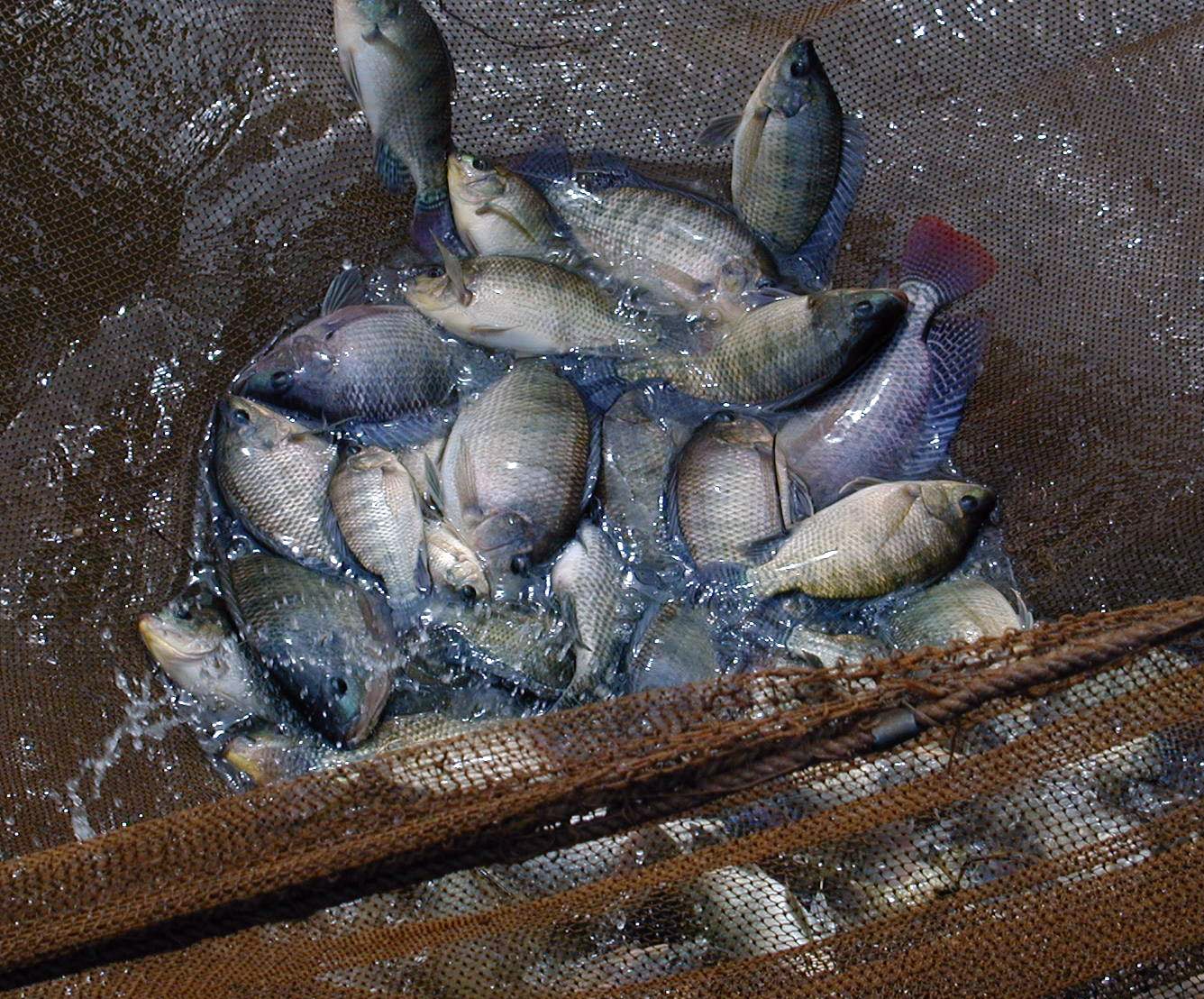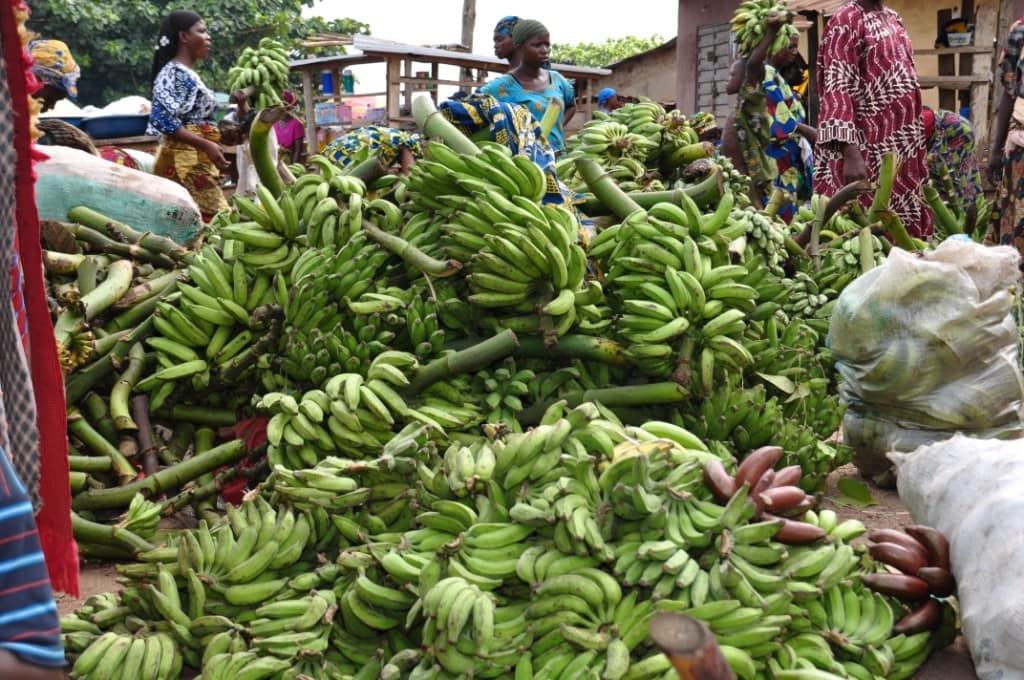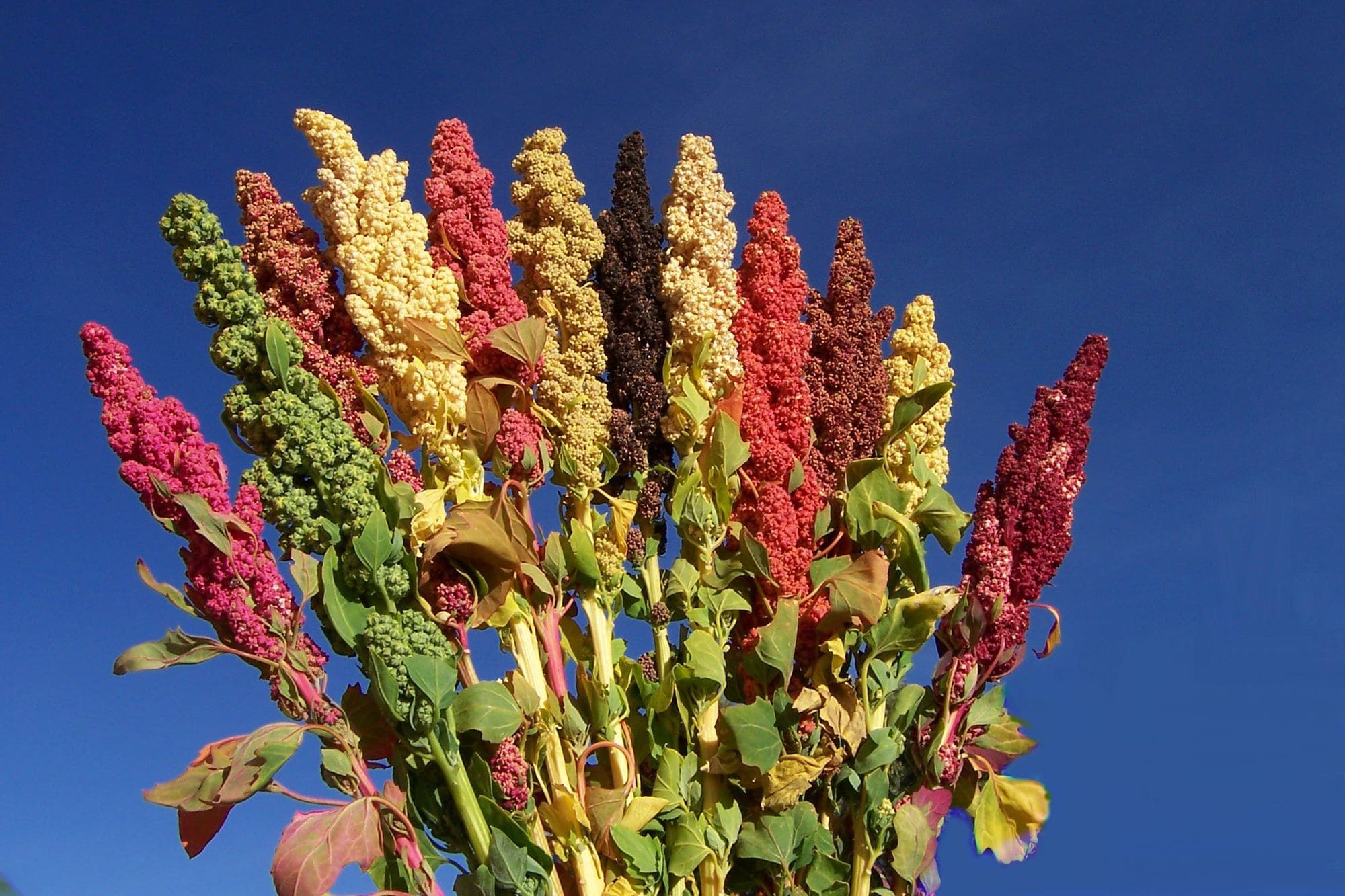BACK TO TOP

Innovations for a healthy world
CGIAR’s original mission – to solve hunger – has expanded over the past 50 years. Our innovative research reveals human health to be part of a much bigger picture.
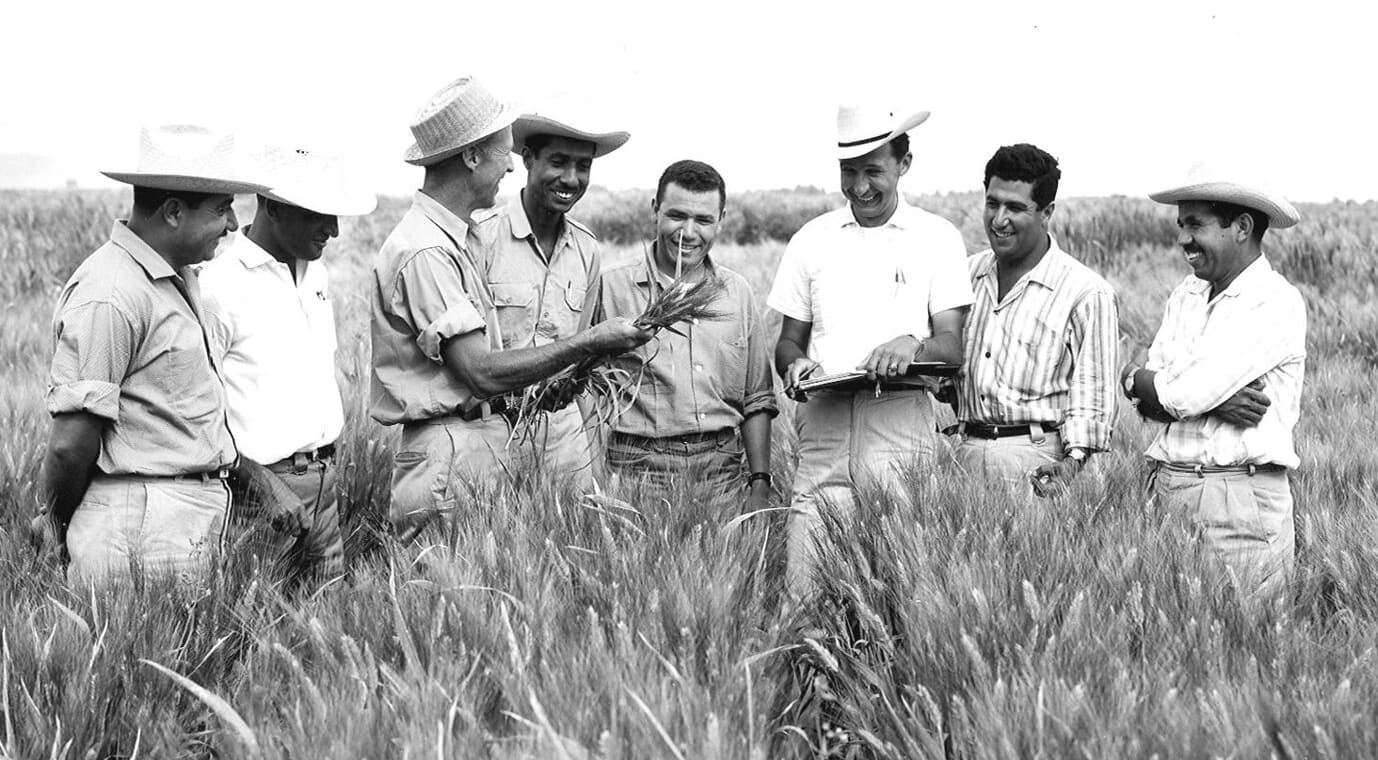
The big picture
In a post-War world, CGIAR grew out of international efforts to feed a growing global population. Fifty years later, those efforts have expanded to view human well-being as part of a much bigger picture, encompassing human, animal, and ecosystem health, under pressure of a climate crisis.
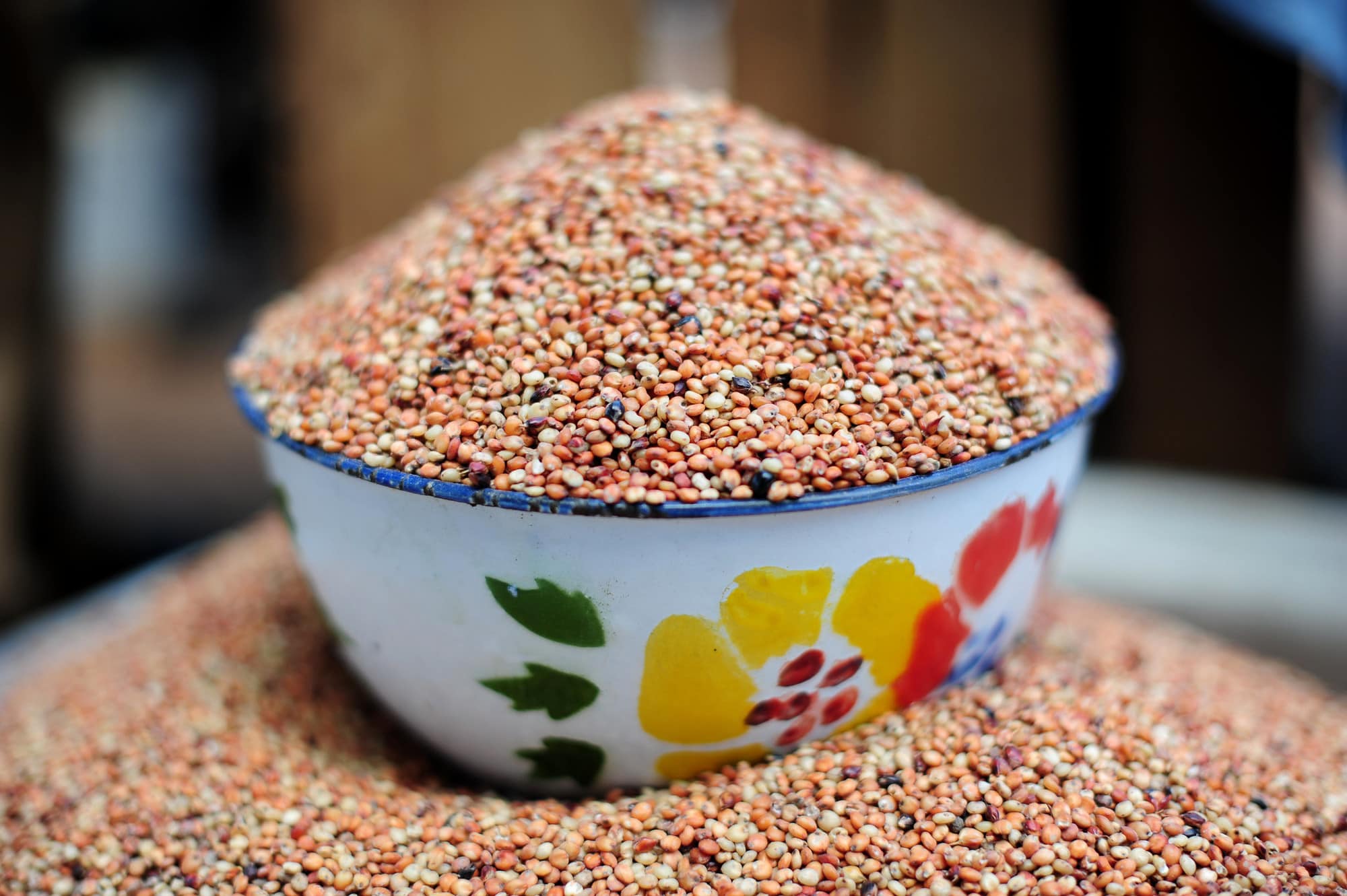
Fewer people overall are hungry today than 50 years ago – though numbers that declined over decades have recently once again begun to climb. Climate change is forcing rapid adaptation within our food systems, and the COVID-19 pandemic poses further threats to progress on ending poverty and hunger.
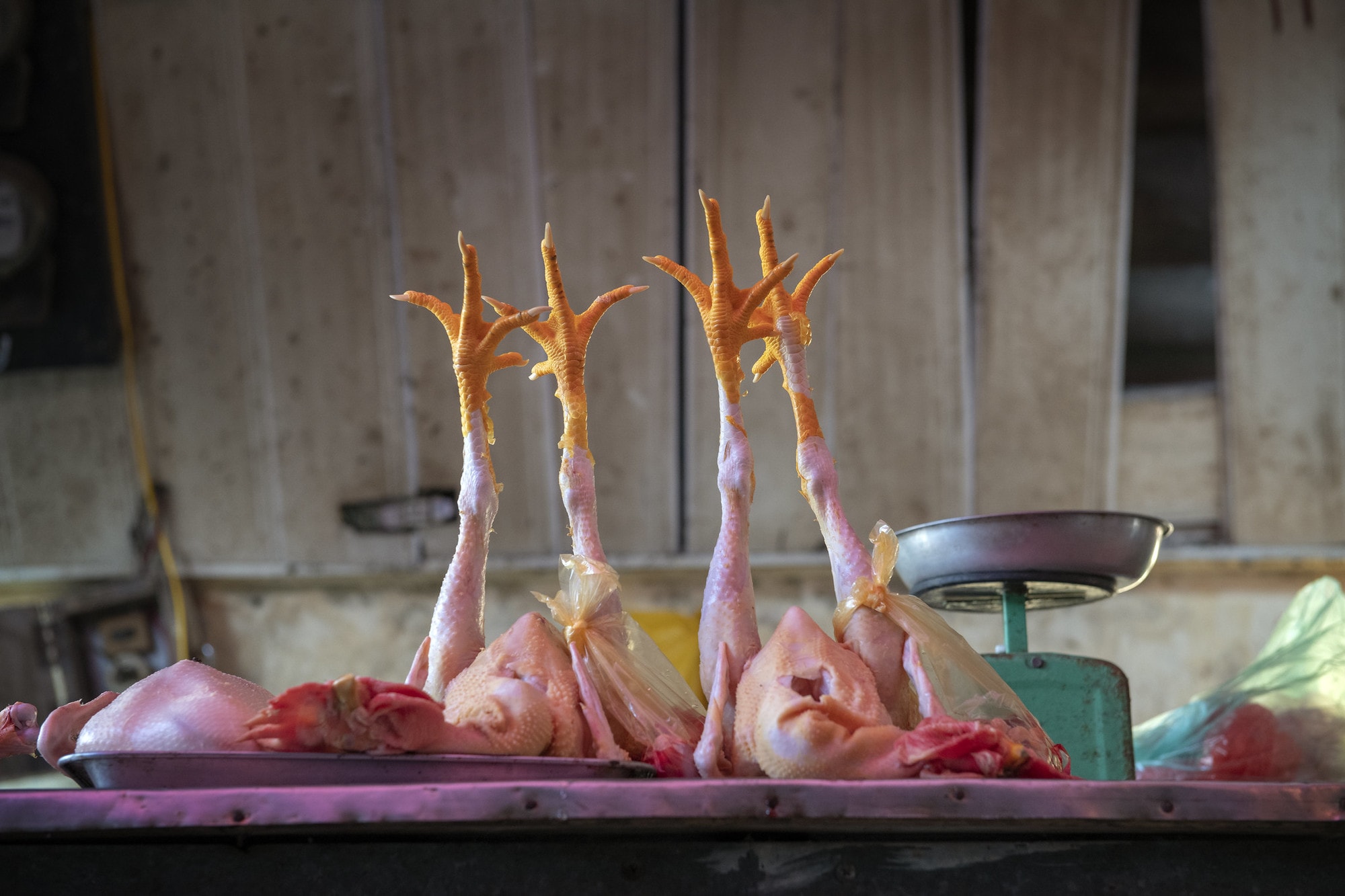
Meanwhile, food-borne disease remains a leading cause of death in many countries, and more than 3 billion people worldwide cannot afford a healthy diet, contributing to an increase in non-communicable diseases in all regions.
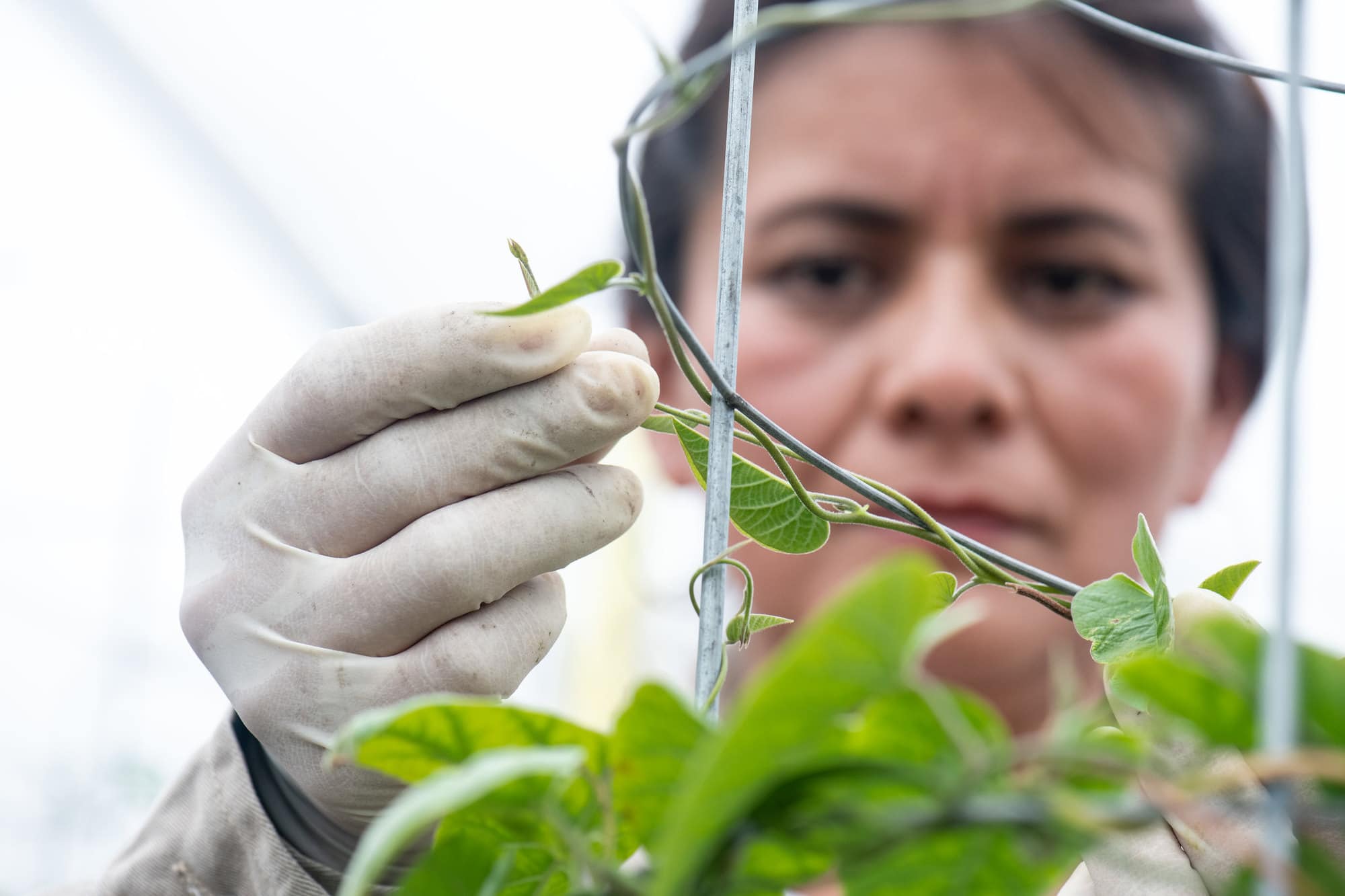
CGIAR research continues to expand its focus to meet these interdependent challenges. Our innovations have advanced global understanding of the place of human health within broader ecosystems and economies, while continuing to adapt to emerging 21st century challenges.
Human Health
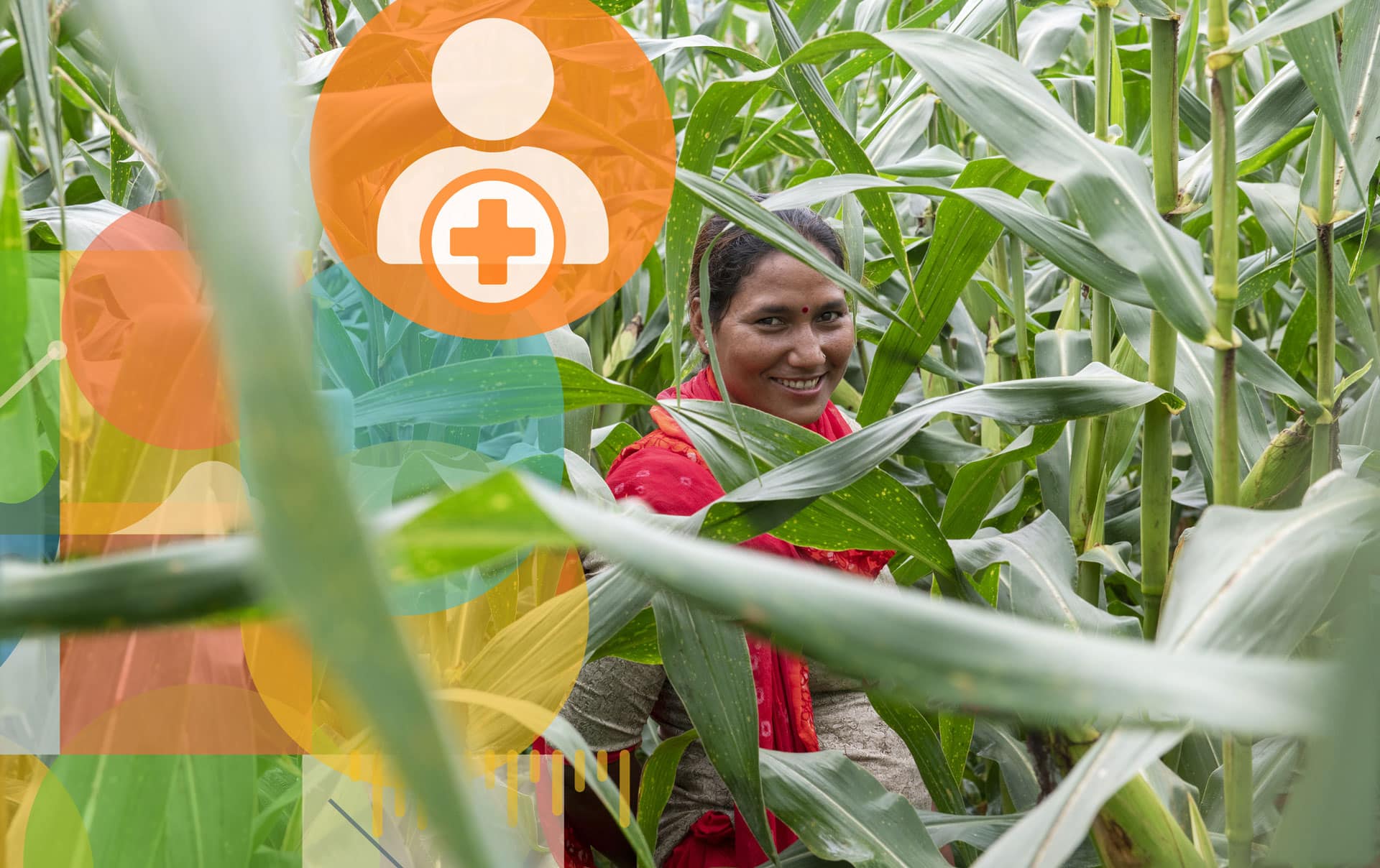

Human Health
Meeting the world’s food needs is not only about quantity – it’s also about quality.
Filling up on staple crops like rice or maize is enough to satisfy hunger, but it’s not enough to sustain overall health. This is the situation for millions in the developing world, where a lack of access to diverse, nutritious foods is causing widespread micronutrient deficiencies.
Nutrients, big and small
A healthy diet is made up of a variety of nutrients, both big and small. Macronutrients are the main type of nutrients that make up the bulk of the food we eat. These include carbohydrates, proteins, and fats which are essential for energy, growth, immunity, and healing. Micronutrients, including vitamins and minerals, are found in much smaller amounts in our food, though they are just as essential for health. Micronutrient deficiencies in vitamin A, iron, and zinc are among the biggest challenges to nutrition in the world today.
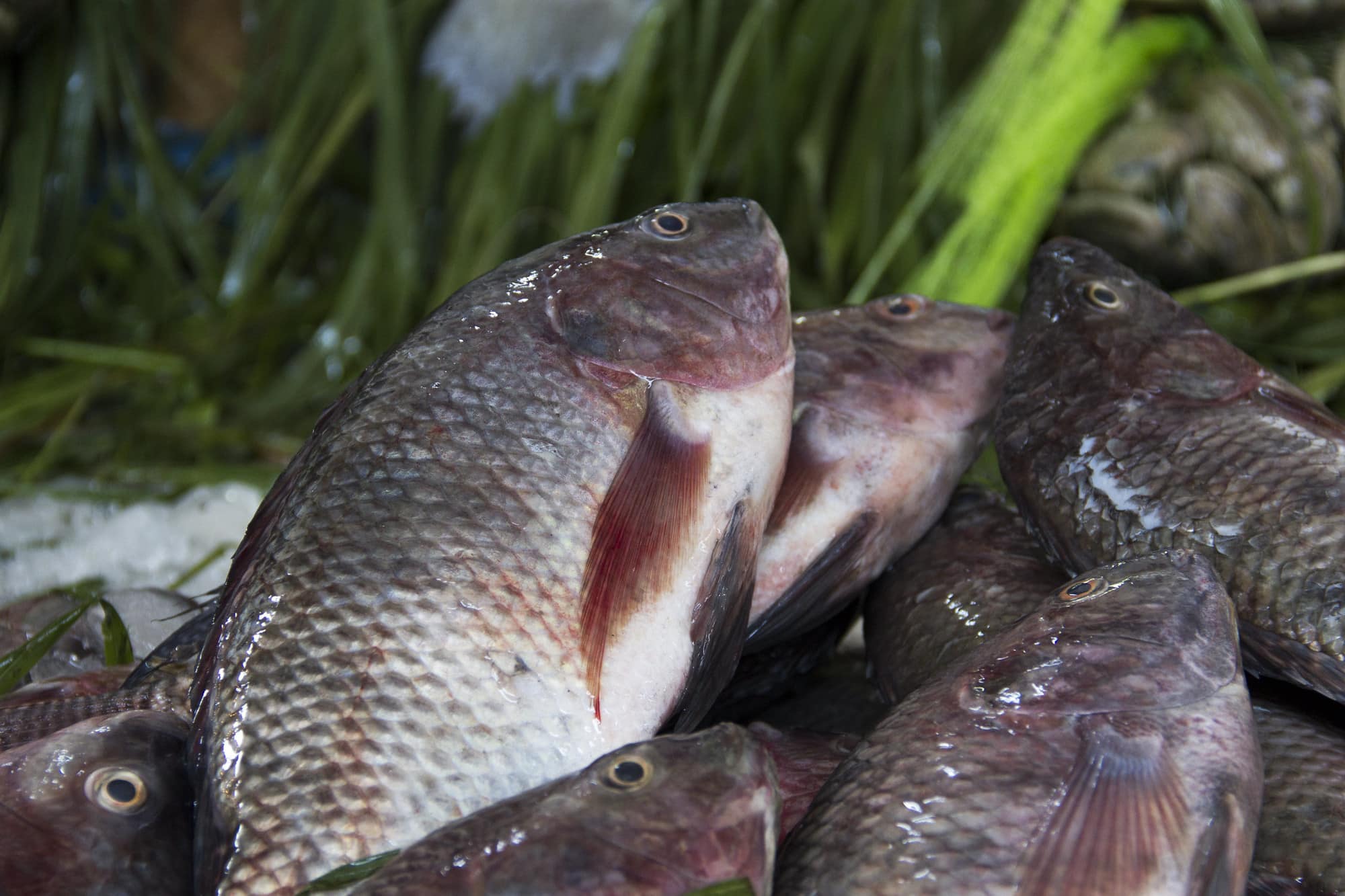 Photo by S. Stacey/Worldfish
Photo by S. Stacey/Worldfish
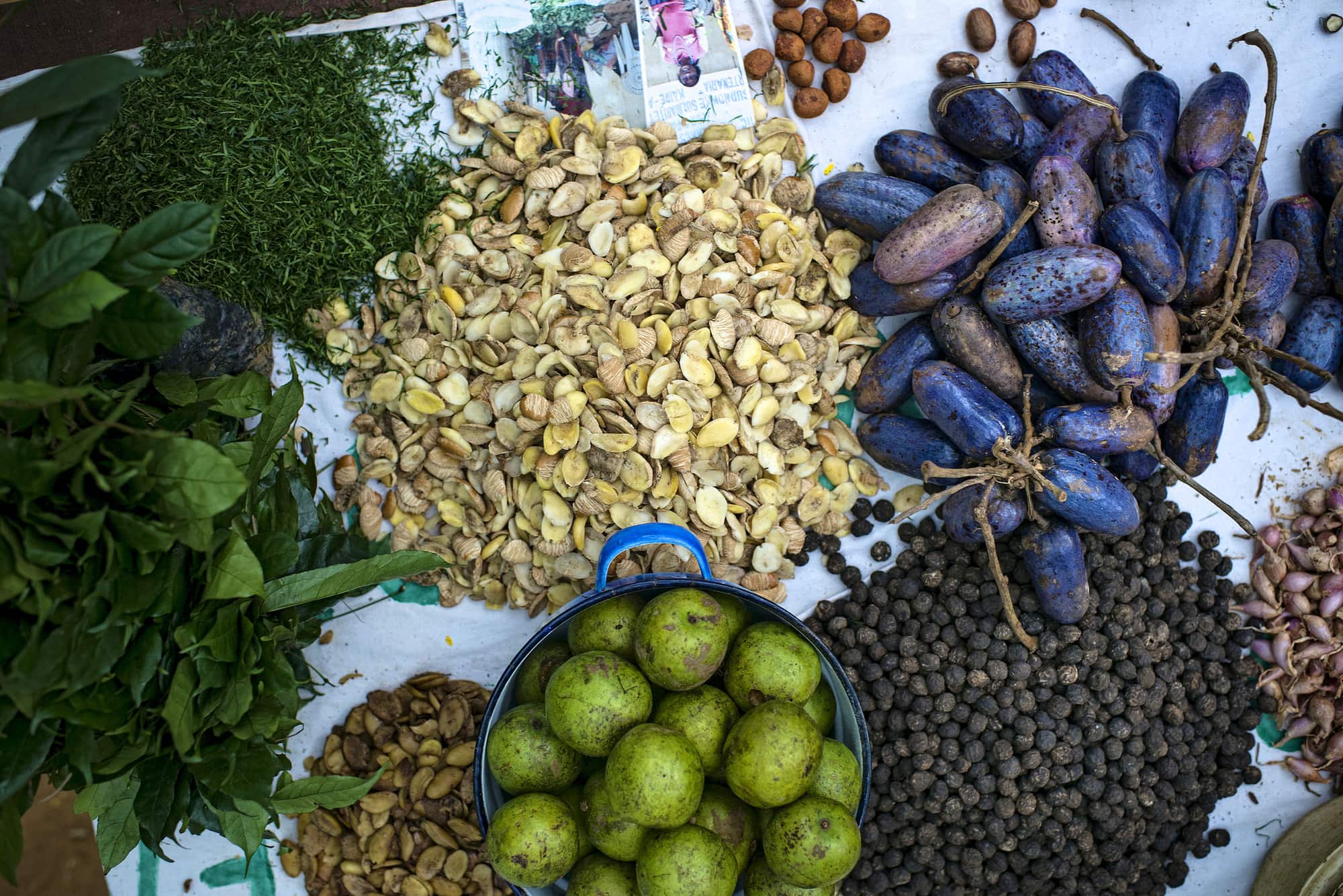 Photo by O. Girard/CIFOR
Photo by O. Girard/CIFOR
‘Hidden hunger’, or a lack of micronutrients in diets, poses a serious threat to human health as it can lead to stunting, anemia, blindness, disease or even death, particularly for women and for children under the age of five.
Over the past half-century, CGIAR innovations have made strides in both feeding and nourishing the world.
-
Innovation


 active: 2003 to present
active: 2003 to presentCrops bred to improve nutrition
READ MOREA diverse diet that includes a variety of fruits, vegetables, and/or animal products usually provides enough micronutrients to sustain human health. However, millions of people, mostly in developing countries, rely on staple foods such as rice or maize that fill up their stomachs but do not provide enough micronutrients for overall health. More nutritious foods that could fill this gap are often unaffordable or simply unavailable. Starting in 2003 under the IFPRI- and CIAT-managed Biofortification Challenge Program (soon after renamed HarvestPlus), multidisciplinary CGIAR research teams successfully “bridged the delta” between agriculture and nutrition through a strategy called biofortification, whereby added nutritional value is bred into familiar foods that people eat every day. The technology is now widely recognized as a practical, evidence-based approach to addressing micronutrient deficiency among smallholder farming families and other low-resource populations.
-
Innovation


 active: 2013 to present
active: 2013 to presentAn index to tackle ‘hidden hunger’
READ MOREGiven the potential of breeding technology to improve food systems, CGIAR scientists at HarvestPlus in 2013 developed the Biofortification Priority Index (BPI) with an aim to help guide biofortification interventions so that they are as targeted, cost-effective, and impactful as possible.
The BPI is an interactive tool that helps identify in which countries, and for which staple crops, biofortification can make the greatest impact on micronutrient deficiencies. The user-friendly tool is designed to guide strategic decisions for investment, policy and practice pertaining to the introduction and scaling of biofortified staples.
The tool is now being used by crop breeders to guide or confirm decisions on research priorities, by civil society organizations and the private sector to make decisions on target locations for programs and interventions, and by international finance institutions and governments to make decisions on investments.
-
Innovation




 active: 1996 to present
active: 1996 to presentBetter beans for Africa
READ MOREInsufficient iron in diets is a leading cause of anemia, a condition that particularly affects pregnant and breastfeeding women, as well as children under the age of five. Through collaborative plant breeding efforts with farmers and other partners, CGIAR scientists have developed and scaled up dozens of varieties of iron-biofortified beans in an effort to address the problem.
Hundreds more varieties are developed through the Pan Africa Bean Research Alliance (PABRA), a bean research network established in 1996 as a uniquely collaborative, multi-stakeholder platform of research for rural transformation that develops improved beans and complementary technologies. PABRA aims to enhance food and nutrition security, incomes, resilience to climate change, and gender equality for improved rural and urban livelihoods in 32 African countries.
To date, PABRA members have released 536 varieties of beans and made them available to more than 30 million households. Developed in response to farmer and market demand, the improved varieties are early-maturing, high in iron and zinc, climate-smart, and tolerant to droughts, pests, and diseases. Currently, 45 new biofortified bean varieties packed with high iron and zinc have been developed and made available to more than 10 million people across PABRA countries.
Under the HarvestPlus Program – part of the CGIAR Program on Agriculture for Nutrition and Health (A4NH) – 40 iron-biofortified bean varieties have been released in six African countries, including in Rwanda. By the end of 2018, an estimated 20% of beans produced in Rwanda were high-iron varieties resulting from this work, consumed by 15% of the population, or 1.8 million people. Iron bean yields were about 20% higher than other available varieties, providing $57-78 additional profit per hectare for smallholder farming families.
Plant & Animal Health
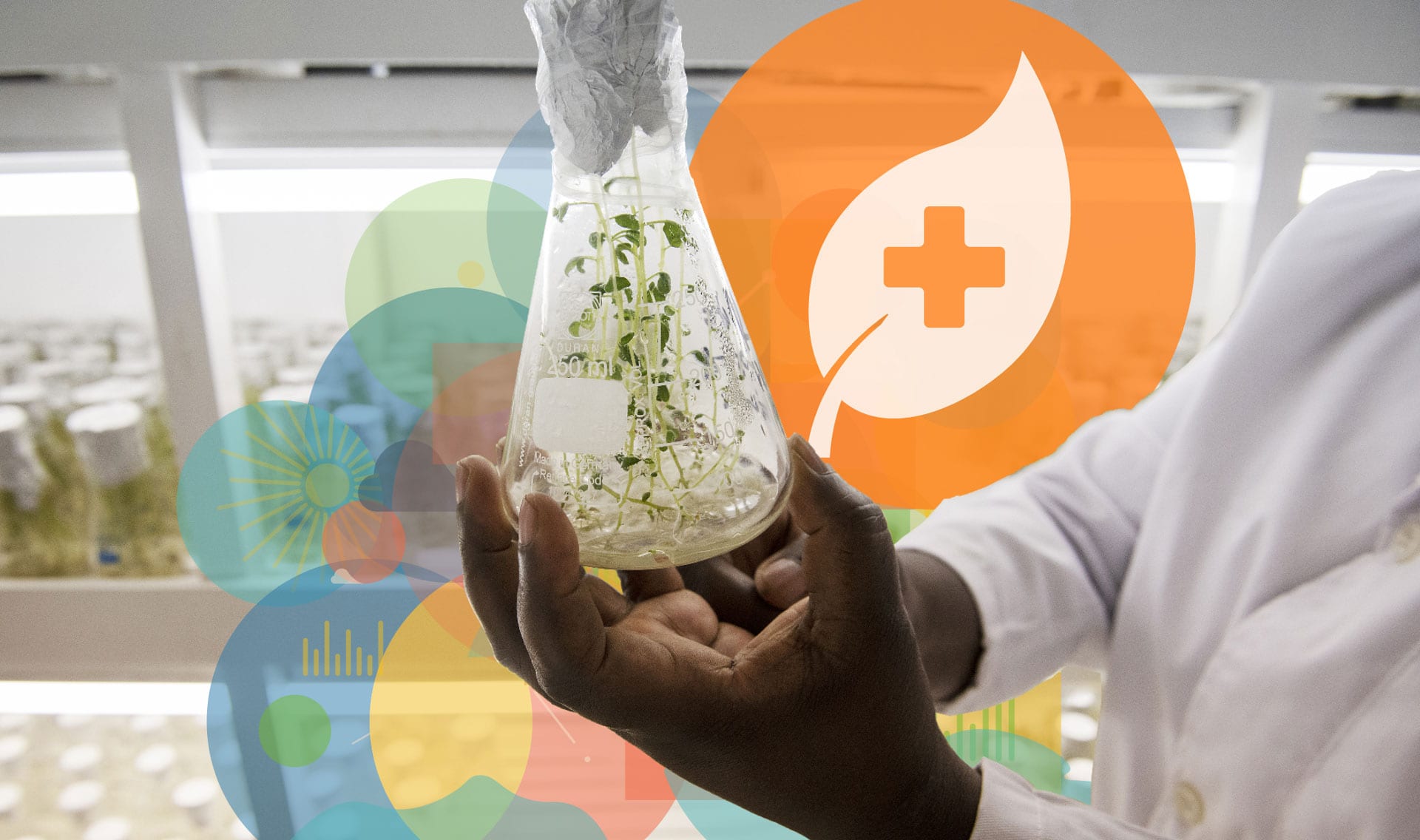

Plant & Animal Health
The ongoing COVID-19 pandemic highlights the power of zoonoses – infectious diseases passed from animals to humans – to disrupt our health, economies, and food systems. While this has come as a shock to high-income countries, in fact zoonoses have long been silent killers in low- and middle-income countries, infecting several billion people each year and killing millions, while having devastating economic consequences.
CGIAR research is helping to prevent the next pandemic via the One Health approach, joining the dots between human, animal, and ecosystem health.
-
Innovation



 active: 1990s to present
active: 1990s to presentPreventing the next pandemic through a One Health approach
READ MOREAs part of CGIAR’s response to COVID-19, an innovative approach to zoonoses is gaining greater global attention. The One Health approach, employed by CGIAR scientists at the International Livestock Research Institute (ILRI), has advanced science on zoonoses from a primary focus on veterinary epidemiology to unite human health, animal health and environmental or ecosystem health.
The work on One Health forms a strong knowledge base for responding to diseases like COVID-19, as well as Rift Valley fever, Highly Pathogenic Avian Influenza (HPAI), antimicrobial resistance (AMR), and other neglected zoonoses. It has so far made an impact in numerous countries and provided national policy advice in Kenya, Ethiopia, Rwanda, Uganda, and Vietnam.
Another silent killer in low- and middle-income countries is poor food safety. Infectious food-borne diseases commonly manifested as diarrhea are a leading cause of death in low- and middle-income countries and are strongly associated with stunting and malnutrition in children. The human health burden from food-borne disease is comparable to malaria, HIV/AIDS or tuberculosis, and costs countries more than $100 billion each year.
-
Innovation



 active: 2000s to present
active: 2000s to presentAdvances in food safety
READ MOREAs people in low- and middle-income countries gain access to more food choices, and global food systems become increasingly complex, the importance of identifying and mitigating food safety risks grows ever more urgent. Infectious food-borne diseases commonly manifested as diarrhea are a leading cause of death in low- and middle-income countries and are strongly associated with stunting and malnutrition in children. The human health burden from food-borne disease is comparable to malaria, HIV/AIDS or tuberculosis, and costs countries more than $100 billion each year. Better management of food-borne disease could save nearly half a million lives each year and safeguard the livelihoods of more than one billion small-scale livestock producers. What began decades ago in work to help smallholder dairy farmers in Kenya to ensure their products were safe has grown into a globally recognized, dynamic, and diverse body of research into food safety in low- and middle-income countries.
Disease can strike plants and animals that humans depend on as food sources. CGIAR innovations through biocontrol and breeding have helped to sustain the resilience of food systems over the past half-century, securing health and livelihoods for millions.
-
Innovation



 active: 1981 to present
active: 1981 to presentBiocontrol for aflatoxins and mealybug
READ MOREPests and diseases can be devastating for crops, causing further problems for food security, health, nutrition, and livelihoods. Biocontrol – or the method of using biological organisms to control pests and diseases – is one way to address the problem without resorting to potentially harmful chemicals. CGIAR scientists have had successes over decades using biocontrol to tackle serious invasions and infections – for example, to control cassava mealybug and aflatoxins in Africa.
In the 1970s, cassava mealybug invaded Africa and spread over the entire cassava belt, leading to widespread famine and affecting 200 million people, mainly poor farmers who relied on cassava as a staple. CGIAR scientists at the International Institute of Tropical Agriculture (IITA) took the lead in searching for natural enemies to be used in biological control.
Releases followed over seven years in Nigeria, demonstrating long-term control. Surveys in a dozen countries confirmed the reduction of cassava mealybug densities and damage in 95% of all fields.
Following a discovery in Paraguay by CGIAR researchers at CIAT (now the Alliance of Bioversity International and CIAT) , a specific parasitic wasp, Anagyrus lopezi, was quarantined by the Centre for Agriculture and Bioscience International (CABI) in England, mass-reared by IITA in Nigeria and Benin, and released in about 150 locations in two dozen African countries, in collaboration with the respective government agencies.
The impact by A. lopezi was quantified over seven years in Nigeria, demonstrating long-term control. Surveys in a dozen countries confirmed the ten-fold reduction of cassava mealybug population densities and damage in 95% of all fields. The introduced wasp was shown to have an outstanding host–searching and dispersal capacity. Economic studies covering 27 countries revealed a total gain of $8 billion to $20 billion and benefit–cost ratios of 200 to 740. The project was honored with the King Baudouin Award together with CIAT in 1990, and CGIAR researcher Hans Herren was awarded the World Food Prize in 1995 for his work on the project.
Another success was found in the biocontrol of aflatoxin contamination of staple crops in sub-Saharan Africa. The contamination was caused by certain Aspergillus species. Some Aspergillus flavus strains do not produce aflatoxins – what are called atoxigenic strains – and can be applied in the field as biocontrol agents to displace aflatoxin producers, lowering contamination in crops up to 100%. No other technology provides such robust, safe, and consistent protection from aflatoxins from field to plate.
-
Innovation




 active: 1988 to present
active: 1988 to presentGenetically Improved Farmed Tilapia (GIFT)
READ MOREStarted in 1988, the Genetically Improved Farmed Tilapia (GIFT) project, a selective breeding project pioneered by CGIAR researchers at WorldFish, has played a critical role in boosting fish productivity both in commercial and in small-scale systems, benefiting millions around the world. For small-scale farmers, GIFT has helped provide a sustainable source of income, food, and nutrition. It has also helped farmers adapt to climate change.
Tilapia is an affordable source of protein, vitamins, minerals, and essential fatty acids that are vital for good health. Because tilapia is hardy and has good disease resistance, it is inexpensive and easy for small-scale farmers to grow. The improved strain is now produced in at least 14 countries on five continents, and is responsible for more than half of the tilapia production in the world.
After 20 generations of GIFT, CGIAR scientists continue to work on developing more resilient, disease-resistant, and hardier strains that can be produced in stressful environments, helping farmers adapt to a changing climate.
Ecosystem Health
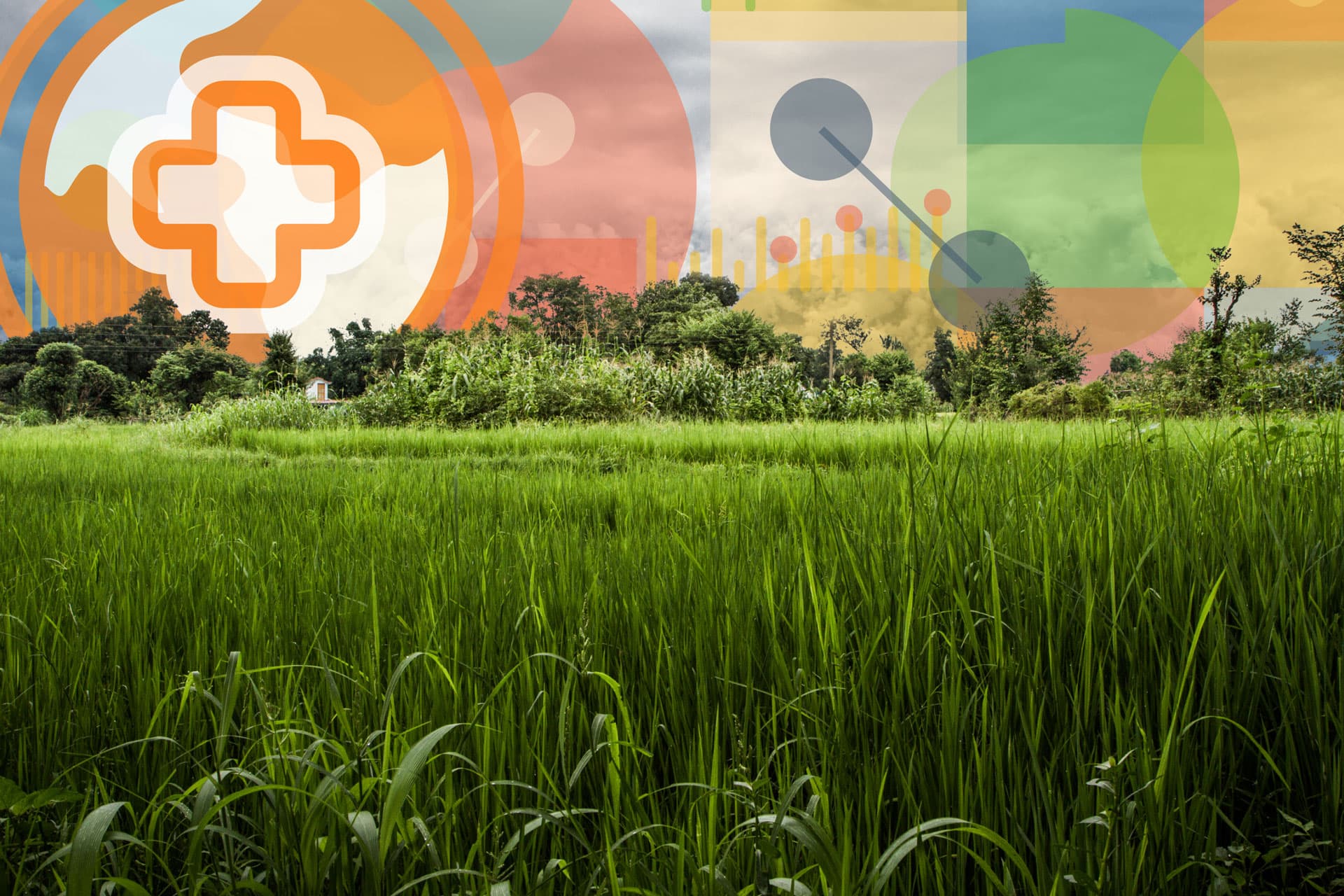

Ecosystem Health
Growing food depends on a healthy ecosystem, yet agriculture is a driver of forest and biodiversity loss, a major source of greenhouse gases that cause climate change, and consumes the majority of the world’s freshwater resources.
Agricultural biodiversity is under threat worldwide, as current food production and consumption revolves around a very limited number of crops. Homogeneous diets, limited food access and poorly developed markets for non-mainstream species perpetuate malnutrition and poverty.
Strategic use of locally adapted, nutrient-rich crops can help conserve this important biodiversity, offering environmental, livelihood, and health benefits to communities around the world.
Safeguarding biodiversity and the environment also sustains our future food supply.
CGIAR innovations continue to place human health within the bigger picture, as part of plant, animal, and ecosystem health under pressure of a climate crisis.
-
Innovation




 active: 2012 to 2019
active: 2012 to 2019Biodiversity for food and nutrition
READ MOREThe Biodiversity for Food and Nutrition (BFN) project, led by CGIAR scientists from 2012-2019, pioneered an innovative approach to the prioritization, research, and promotion of biodiversity for food security and nutrition.
Project partners produced never-before-seen food composition data that demonstrates the nutritional value of many traditional species and varieties, and used this evidence to inform policies, for example, by integrating species into school feeding programs, and introducing market interventions, such as local women-led traditional food businesses.
By contributing a solid foundation of evidence and numerous successful case studies with adaptable examples of best practices, the BFN project has demonstrated the use of biodiversity for strengthening the cross-cutting links between human and planetary health, and paved the way for global impact.
-
Innovation



 active: 1994 to present
active: 1994 to presentFarro, quinoa, and rocket back on the table
READ MOREIn 1994, CGIAR researchers at the International Plant Genetic Resources Institute (IPGRI, now the Alliance of Bioversity International and CIAT) launched a multi-country collaboration known as the Underutilized Mediterranean Species project, focusing on the potential of four key crops: rocket, oregano, pistachio, and hulled wheats (farro, spelt, and emmer).
The project paved the way for a new global endeavor on neglected and underutilized species (NUS). The highly innovative NUS program, now active for more than two decades, takes an interdisciplinary, intersectoral, participatory approach to mobilizing NUS to fight food and nutrition insecurity, poverty, climate change, and the marginalization of disadvantaged groups such as women and Indigenous peoples.
In 25 years of work, several neglected crops have been brought back from oblivion: rocket in Italy, quinoa in Bolivia, leafy vegetables in Africa south of the Sahara, and minor millets in India. Opening up markets for these nutrient-dense and locally adapted crops has increased incomes for smallholder farmers, boosted diversity in fields and home gardens, raised yields and improved diversity in diets.






